Note the emergency card for Long COVID that cellist Joshua Roman carries with him. What a sad state of affairs.
--------------------------------------
Similar to last week, there are about 1 million new COVID cases per day in the United States with about every 1 in 34 people infected nationally per JP Weiland. Wastewater and cases were starting to peak, but the curve is “shouldering” because children are returning to school and because of KP.3.1.1’s dominance. Hospitalizations are no longer reported by most states, but may be later this year.
From: https://twitter.com/JPWeiland/status/1827075333553607121
Emergency department visits for COVID have peaked in most places except the midwest region which is still increasing. Unfortunately, deaths from COVID infection are increasing in the US. According to BNO news, “1,134 new COVID deaths were reported during the week [of August 18], a notable uptick from 761 last week and 652 the week before. This marks the first week since March with more than 1,000 new deaths.”
A new Bloomberg article talks about the fact that COVID deaths are still significant 5 years into the pandemic. Other factors such as increased drug overdoses and higher stress on healthcare systems from COVID have contributed to the increase in deaths as well. Bloomberg reports that this somber trend has led to growing profits for companies in the funeral industry.
Regarding wastewater levels of SARS-2, the CDC reports VERY HIGH levels of virus nationally, with the highest levels in the West.
From: https://www.cdc.gov/nwss/rv/COVID19-nationaltrend.html
County SARS-CoV-2 wastewater levels from Sara Anne Willette: https://iowacovid19tracker.org/
Variants
KP.3.1.1, a deFLuQE variant, is causing most cases of COVID now around the world. A new recombinant variant called XEC is being followed by the variant hunters of Twitter. XEC is a combination of KP.3.3 (FLuQE) and KS.1.1 and has spike mutations: F456L, Q493E, with 2 new mutations S:T22N and S:F59S. It does not have the R346T mutation like the FLiRT variants. Although XEC does appear to have a small growth advantage over KP.3.1.1, it is too early to tell if it will have an impact or not.
Vaccines
On Thursday, the FDA approved the updated KP.2 mRNA COVID vaccines which should be available in pharmacies soon. As of today, the CDC has not updated the vaccine locator (https://www.vaccines.gov/en/) yet, but I anticipate that they will very soon. The new updated KP.2 mRNA vaccines will be approved for all people age 6 months and older. People over age 12 who were recently vaccinated should wait 2 months to receive a new mRNA COVID KP.2 vaccine. Many people plan to get vaccinated now with the new KP.2 vaccine since wastewater levels and cases are very high, but others are considering waiting until the end of October in anticipation of the holidays and the winter wave.
Friday, Novavax updated their press release statement on the Novavax JN.1 vaccine stating that they were working to provide “additional information” requested by the FDA. It is unclear when the Novavax vaccine will be approved.
Starting in late September, the U.S. Federal government will offer 4 free COVID tests for Americans at COVIDtests.gov.
Researchers from the NIH put out a review on the next generation of coronavirus vaccines. They discussed coronaviruses (CoVs) including SARS-1, MERS and SARS-CoV-2 and how they are related to each other phylogenetically. In addition, they reviewed available vaccines for different types of CoVs, work being done towards creating pan-coronavirus vaccines that can fight many types of coronaviruses, and what vaccine technologies are expected in the near future.
Pediatrics
In an observational RECOVER trial study evaluating children with Long COVID, the most common Long COVID symptoms that school-age children (6-11 years) had were “headache (57%), followed by trouble with memory or focusing (44%), trouble sleeping (44%), and stomach pain (43%).” Other common symptoms included body, muscle, and joint pain; daytime tiredness/sleepiness or low energy; and feeling anxious. “In adolescents (12-17 years), the most common Long COVID symptoms were daytime tiredness/sleepiness or low energy (80%); body, muscle, or joint pain (60%); headaches (55%); and trouble with memory or focusing (47%).” Feeling anxious and sleep disturbances were other commonly reported symptoms for teens. The authors note that it is important to stratify the two different age groups when studying Long COVID because of the differences in symptom frequency.
Long COVID
A new study highlights "leaky gut" and autoimmune responses as key factors in Long COVID. Researchers discovered that damage to the gut's tight junctions from autoantibodies to tight junction proteins zonulin and occludin (ZOOC) allows bacteria to enter the bloodstream. This can trigger other autoimmune responses in Long COVID which are linked to depression and chronic fatigue. IgA-LPS (antibody against bacterial proteins) combined with IgG-ZOOC (antibody against zonulin + occludin proteins in tight junctions between cells) were the strongest biomarkers for Long COVID in this study. The study also found connections between Long COVID, reactivation of the HHV-6 virus, and autoimmune attacks on oligodendrocyte and neuronal proteins, including myelin basic protein (MBP). Targeting the damage to the gut and reducing autoimmune responses may be important in treating Long COVID.
The Patient-Led Research Collaborative wrote an article on how to best design clinical trials for Long COVID. They recommend drug trials that aim to cure Long COVID, by repurposing existing drugs and developing new ones. Studies should be rigorous, like triple-blinded randomized trials, and accessible so participants can join remotely from home. It is also important to include other chronic illnesses like ME/CFS and dysautonomia as comparison groups, and to screen for a wide range of symptoms. Trials should strive for diverse representation, including people of all races, ethnicities, genders, and severity levels of illness. The authors also recommend involving patients with lived experience and testing multiple therapies at once to make trials more effective.
An expert consensus report written by Long COVID all-star researchers from around the world highlights the complexity of Long COVID. The report emphasizes the need for improved diagnosis, treatment, and research into Long COVID, as well as better education for healthcare professionals. Key recommendations include prioritizing research on the mechanisms of Long COVID, including organ damage, immune dysfunction, and the impact on children. The panel also stresses the importance of multidisciplinary care, individualized treatment plans, and the development of biomarkers to aid diagnosis and treatment. The report calls for global collaboration and funding to address the long-term societal and economic impacts of Long COVID.
Skeletal muscle biopsies from people with Long COVID showed reduced mitochondrial respiration compared to healthy individuals. The low mitochondrial respiration was associated with high blood levels of soluble IL-2 receptor alpha subunit (sIL2R), a T cell-specific receptor. In vitro studies showed that sIL2R directly impairs mitochondrial oxygen consumption and reduces mitochondrial complex III subunit protein levels in cultured muscle cells. Targeting systemic sIL2R may be a potential treatment for PASC-related fatigue.
In an article entitled “A Virtuoso Cellist’s Painstaking Path From Long Covid Back to the Stage”, cellist Joshua Roman talked to the New York Times about what it has been like for him to have Long COVID. We were also fortunate to have Joshua speak at a Stanford CME on Long COVID last Thursday where he performed a musical piece that he wrote about Long COVID. It was very moving.
Card that Joshua Roman carries in case he has a Long COVID “crash”, From: https://buff.ly/3XezuFZ
Post COVID chronic illnesses:
Anosmia and Brain damage
A group from Chile found that people who had anosmia (loss of smell) from a COVID infection have abnormal changes in brain function and structure including alterations in cortical thickness and white matter integrity. In 73 people with post-COVID anosmia, cognitive tests showed impulsive decision-making and functional MRI showed changes in brain activity, especially in brain regions associated with decision-making and learning. “These findings suggest that anosmia may be a sign of more serious neurological issues, even in patients with mild COVID-19 symptoms.”
Hyperglycemia
We are seeing a significant increase in Type 2 diabetes after COVID infection. A new study shows that SARS-CoV-2 infected African green monkeys have "a dysregulated blood chemokine signature during acute COVID-19 that correlates with elevated and persistent hyperglycemia four months post-infection." Interestingly, giving a COVID mRNA vaccine 4 days after the monkeys were infected, improved glycemic control. The authors concluded that the African green monkey model can be used to identify treatments for COVID-related metabolic problems.
Heart muscle abnormalities
In a preprint article, authors from China discuss a case series of 5 patients with viral myocarditis after COVID infection that were associated with cardiovascular diseases including sudden cardiac death during exercise, coronary atherosclerotic heart disease, acute inferior myocardial infarction, and acute myocarditis. Heart biopsies evaluated under electron microscopy showed "widespread mitochondrial vacuolations and the presence of myofilament degradation within the cardiomyocytes of these patients" that was similar to what was found in SARS-CoV-2-infected mice that the authors studied as well.
Mental Illness
COVID infection is associated with increased risks of cardiovascular disease, diabetes, and other long term chronic illnesses. A new study shows that mental illness is increased after COVID infection as well, especially for unvaccinated people. A group from the United Kingdom studied more than 18 million people, of which 14 million were vaccinated against COVID-19. Unvaccinated people were found to have a higher risk of mental illness in the year after COVID infection, and if they were hospitalized for COVID and not vaccinated, they were 16.3x more likely to have depression in the year after COVID infection. Vaccination was found to reduce the risk of new onset and worsened mental illness after acute COVID infection.
According to a tweet by Helen Branswell of STAT News, there are fewer new H5N1 outbreaks in cattle being reported in the last few weeks. Last week, there were only 2 new infected herds reported.
Mpox, previously known as monkeypox, has been spreading in several countries in Africa with the highest numbers in the Democratic Republic of the Congo (DRC). Last week, a Clade I mpox case was reported in Sweden and this week another case was noted in Thailand. Both people had just returned from traveling in Africa. The WHO Public Health Emergency of International Concern (PHEIC) is helping to mobilize people and supplies to help curb the African outbreak. A new study from the NIH shows that the antiviral Tecovirimat (TPOXX) did not work against Clade I mpox in the DRC. But, they did find that hospitalization and high-quality supportive care results in better outcomes including a lower mortality rate from Clade 1 mpox.
I made an infographic summarizing Mpox that I put in a separate post here.
Using the WHO database for a disproportionality study, researchers found an increased risk for suicidal ideation with semaglutide (Wegovy), a GLP-1 medication, that was not seen for liraglutide. Suicidal ideation was higher in patients taking semaglutide if they were already taking antidepressant medications. Of note, antidepressant use had been an exclusion criteria in premarketing clinical trials.
83 year old Dr. Fauci was hospitalized for a week for West Nile virus. He is now home and is expected to make a full recovery. About 1 in 150 infected people can develop a serious, sometimes fatal, case of West Nile virus. West Nile virus can be prevented by protecting oneself from mosquito bites.
A new mutation for "salmiak" (salty licorice) coats has been discovered in cats in Finland. The distinctive salt-and-pepper color pattern in the cats includes white tails and yellow or green eyes.
From: https://onlinelibrary.wiley.com/doi/10.1111/age.13438
Have a great rest of your weekend,
Ruth Ann Crystal MD
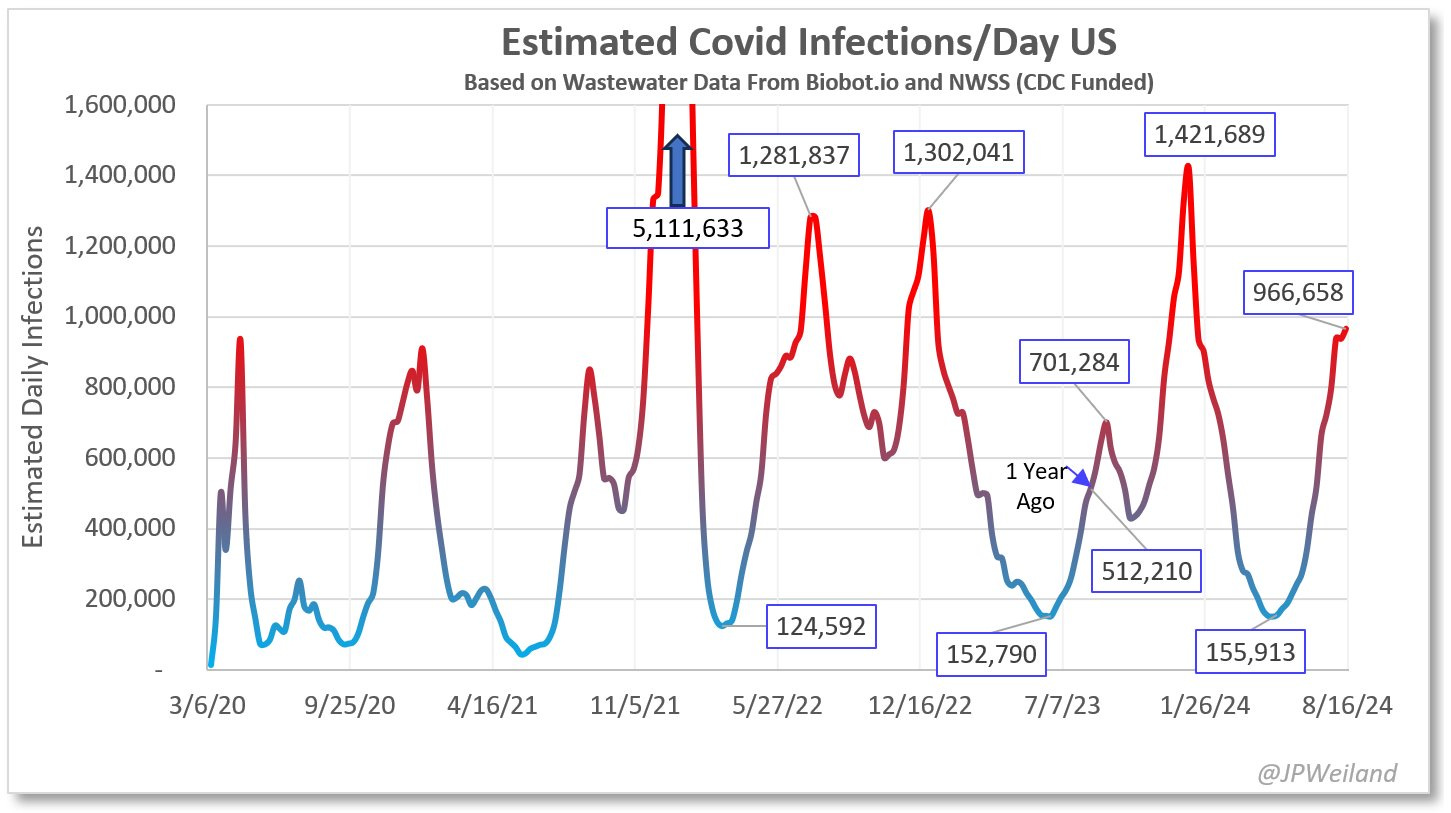
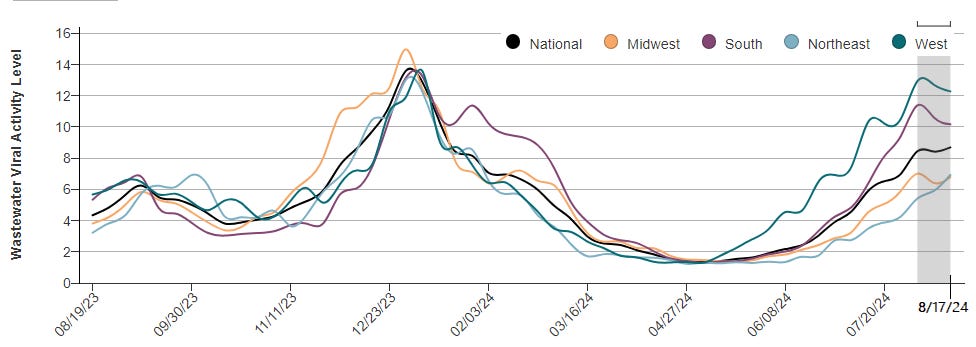
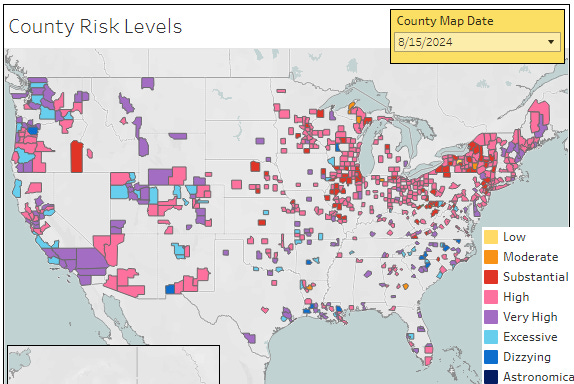
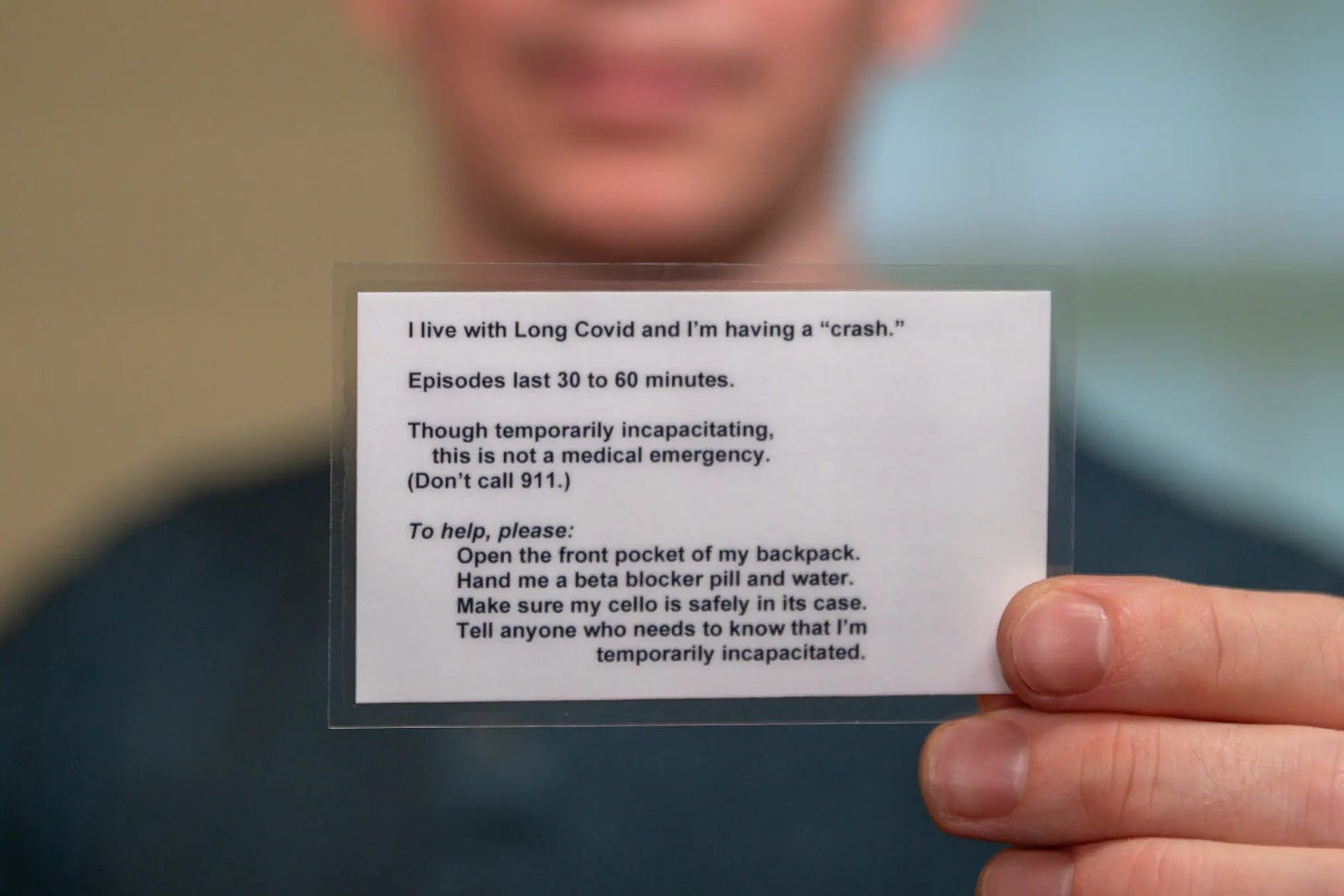
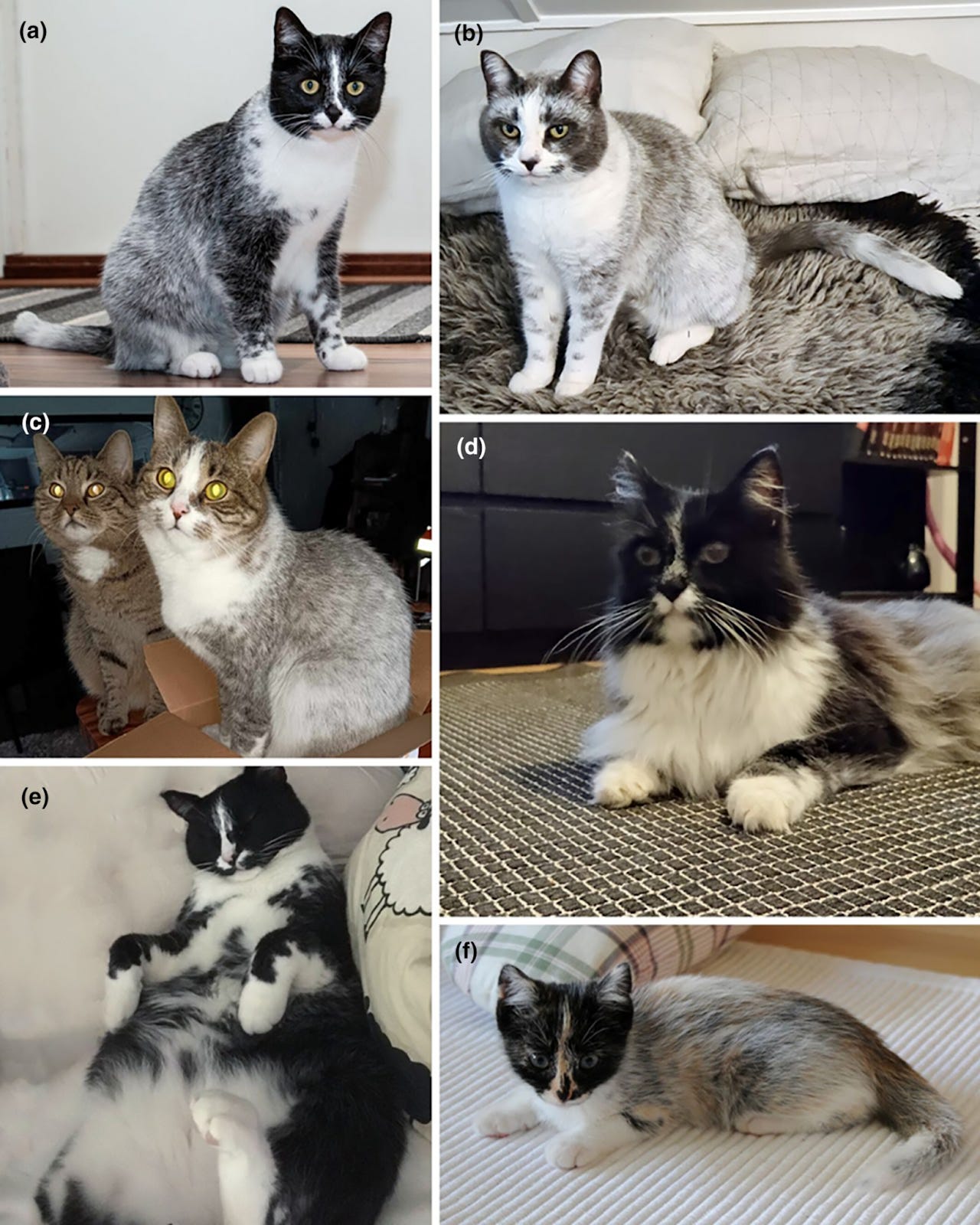












.jpg)
No comments:
Post a Comment